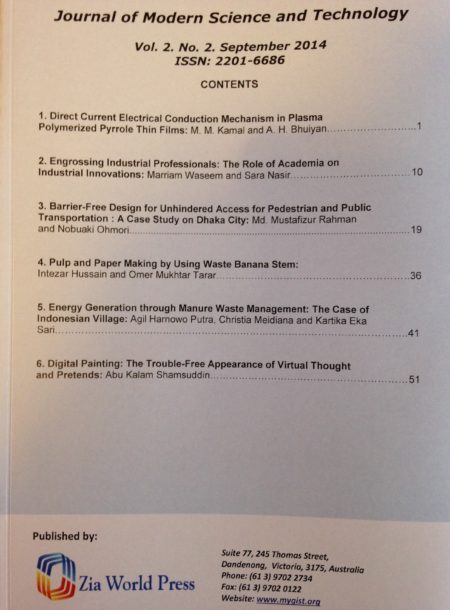Journal of Modern Science and Technology
Vol. 5. No. 1., September 2017, Pages: 1-10
A Study on Seasonal Variation of Hydrodynamic Parameters of Padma River
Iskandar Haiyat Mahmud, Probir Kumar Pal, Afeefa Rahman and Anika Yunus
Padma, a major river in Bangladesh is the main distributary of the
Ganges flowing generally southeast for 120 kilometres to its confluence
with the Meghna river. It has been traditionally considered a dominantly
meandering river but recently switching over into a braided river due to
its highly susceptible nature of erosion and deposition. To identify proper
behavior and seasonal hydrodynamic variation of the Padma river,
different hydrodynamic parameters have been included in this study. The
reach is selected from Baruria transit at upstream to Mawa at
downstream. Data of hydrodynamic parameters such as water level,
velocity, discharge have been sorted, analyzed and plotted for the
investigation of variation of various parameters during pre-monsoon,
monsoon and post-monsoon seasons. The velocity, water level and
discharge are found to be maximum during monsoon than pre-monsoon
and post-monsoon. Discharge and water level approximately decrease in
pre-monsoon and post-monsoon period by 76.3%, 75.7% and 59.3%,
57.4% respectively in comparison to monsoon period. From the data
analysis, discharge and water level have been found to be maximum in
monsoon 1998. It is also known that sediment transport rate is closely
related to the velocity. The analysis also shows that velocity at monsoon
period increase about 50% to 65% than pre-monsoon and post-monsoon
period. Therefore during monsoon, high velocity results high sediment
transport rate and ultimately contributes in erosion/deposition of river
bed. It is hoped that the findings of this assessment will be helpful to
understand the seasonal hydrodynamic nature of the Padma river and
suggest possible future development works to be implemented on this
river.

